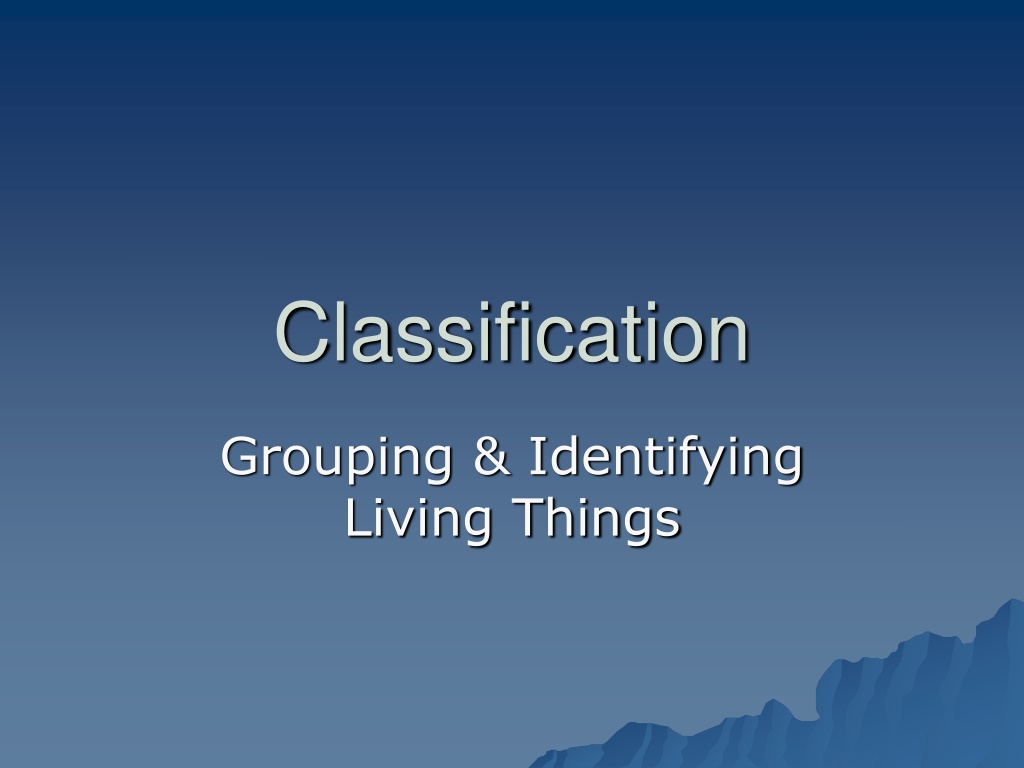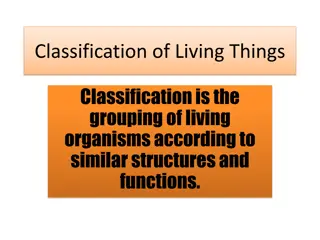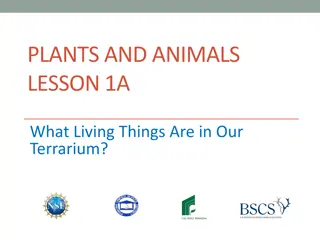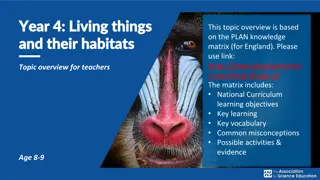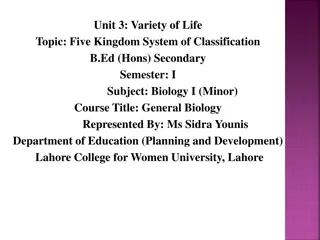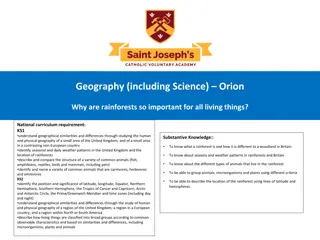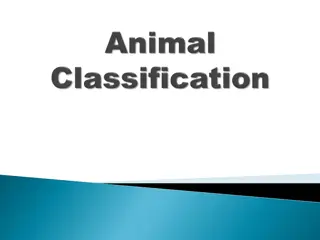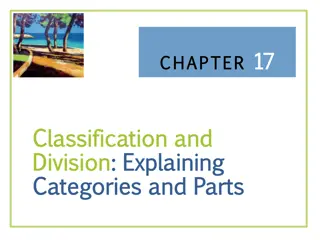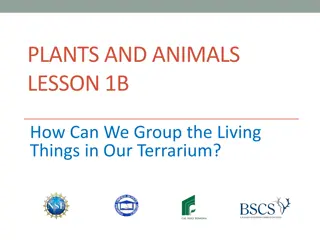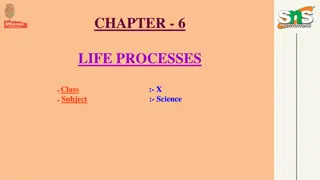Understanding the Classification of Living Things
The classification of living things involves grouping them into different categories based on their characteristics and similarities. It helps us organize and understand the diversity of life on Earth. This process allows for easier identification, study, and communication about different species. By classifying living things, we can also make predictions about their behaviors and traits.
Download Presentation

Please find below an Image/Link to download the presentation.
The content on the website is provided AS IS for your information and personal use only. It may not be sold, licensed, or shared on other websites without obtaining consent from the author. Download presentation by click this link. If you encounter any issues during the download, it is possible that the publisher has removed the file from their server.
E N D
Presentation Transcript
Classification Grouping & Identifying Living Things
Why classify? Think of three examples where we group things. Why do we group these things?
Classifying Living Things We put livings things into two large groups: Animals Plants
Animals Animals are spilt into two major groups: Vertebrates Invertebrates
Vertebrates These are animals with a backbone. There are five groups of vertebrates: Amphibians Birds Fish Mammals Reptiles
Amphibians Have moist skin Lay jelly coated eggs in water Lives on land and water
Birds Have feathers and hollow bones Lay hard shelled eggs Warm blooded
Fish Have wet scales Lays eggs in water Lives in water
Mammals Have hair and produce milk Give birth to live offspring (no eggs) Warm blooded
Reptiles Have dry scales Lay leathery shelled eggs Cold blooded
Invertebrates These are animals without a backbone There are eight groups of invertebrates Molluscs Flatworms Annelids Roundworms Sponges Echinoderms Cnidarians Arthropods
Molluscs Crawl on a single fleshy pad. Can have a shell
Flatworms Have flat worm like bodies
Annelids Have round worm like bodies Have bodies divided into segments
Roundworms Have long thin round worm like bodies Have bodies with no segments
Sponges Have bodies made of loosely joined cells
Echinoderms Have bodies divided into five parts Have spiny outer covering
Cnidarians Have thin sack like bodies Have tentacles
Arthropods Have lots of legs and segmented bodies. There are four group of arthropods: Arachnids Centipedes & Millipedes Crustaceans Insects
Arthropods - Arachnid Have four pairs of legs. Have bodies divided into two sections
Arthropods Centipedes & Millipedes Have long thin bodies and pairs of legs on each of their many body sections
Arthropods - Crustacean Have five-seven pairs of legs First pair often used as pincers Bodies covered in shell
Arthropods - Insects Have three pairs of legs Bodies divided into three sections Often have wings
This powerpoint was kindly donated to www.worldofteaching.com http://www.worldofteaching.com is home to over a thousand powerpoints submitted by teachers. This is a completely free site and requires no registration. Please visit and I hope it will help in your teaching.
